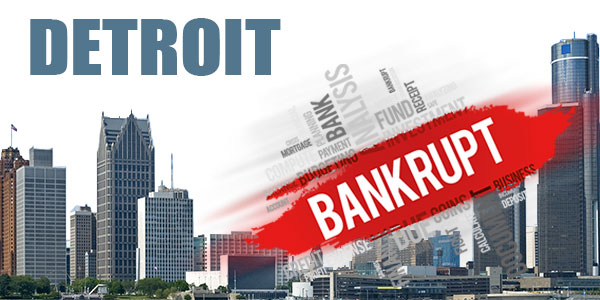When a large city like Detroit files bankruptcy, it means serious trouble for the residents. In 2013, Detroit filed Chapter 9 bankruptcy to pay off $18 billion debt to make a fresh financial start. Pension, medicare obligations, pending bills surpassed the annual revenues of Detroit by billions of dollars and this brought the city to the state of insolvency.
Okay. I’m not getting into the nitty-gritties of Detroit bankruptcy, as in how much the city lost or gained. Enough has already been written, discussed and debated in the last 2 years. But, what I’m going to do is look at this case from a different perspective, in a broader angle. For instance, what does it mean when a flourishing and large city like Detroit files bankruptcy? Let’s find out.
1. It means less jobs for the city dwellers
Back in 2013, there was a massive unemployment in Detroit. Jobs were few. So, city dwellers didn’t have much option than to relocate. Employers had no option but to go to other cities due to the high cost of the city’s government. No one was interested to relocate in Detroit and set up a business. This accelerated the unemployment rate in the city all the more.
2. Budget cuts on public services
Budget cuts on public services such as water, fire, police and sewage departments are inevitable when a city like Detroit files bankruptcy. This is mainly because bankruptcy involves reorganization of finances in order to pay off debts. Just look at what happened in Jefferson County. Hundreds of workers were laid off, which meant bigger sewage bills for residents.
3. National assets are at stake
Insolvency can make a city to do anything to save itself financially. It may compel a city to sell the masterpieces from its art museums. Although this is the last step a city can ever take, yet it can’t be ruled out completely. Debates will be there if a state’s art collections can be sold or not. Committees will be formed too. Ultimately, the court will decide the fate of the city art collections.
4. Increased crime rate and more abandoned buildings
High unemployment leads to increased criminal activities in the buildings abandoned by people who have relocated. In Detroit, there were 78,000 abandoned buildings in the city. Crime rate was high due to city’s financial problems. Government had no money to pay pension to retired city employees, police, firefighters and teachers. Needless to say that there was a small amount of money to pay active policemen and keep them safe in Detroit.
5. Basic services are compromised
After the city filed bankruptcy in 2013, only one-third of the ambulances were available for people. Around 40 percent of the street lights were not working> and more than 3300 unresolved complaints were there.
Bankruptcy gives a breathing space to a city, which is crippled financially. It may not help to save the public services. But, it certainly help a city to start offering services at lower cost. The increased revenue help the city dwellers to give a sigh of relief. But, normally, the government doesn’t increase taxes immediately. First, it’s wrong to ask people to pay higher tax for less services. Secondly, this won’t help to increase revenue dramatically since most people have already left the city.









